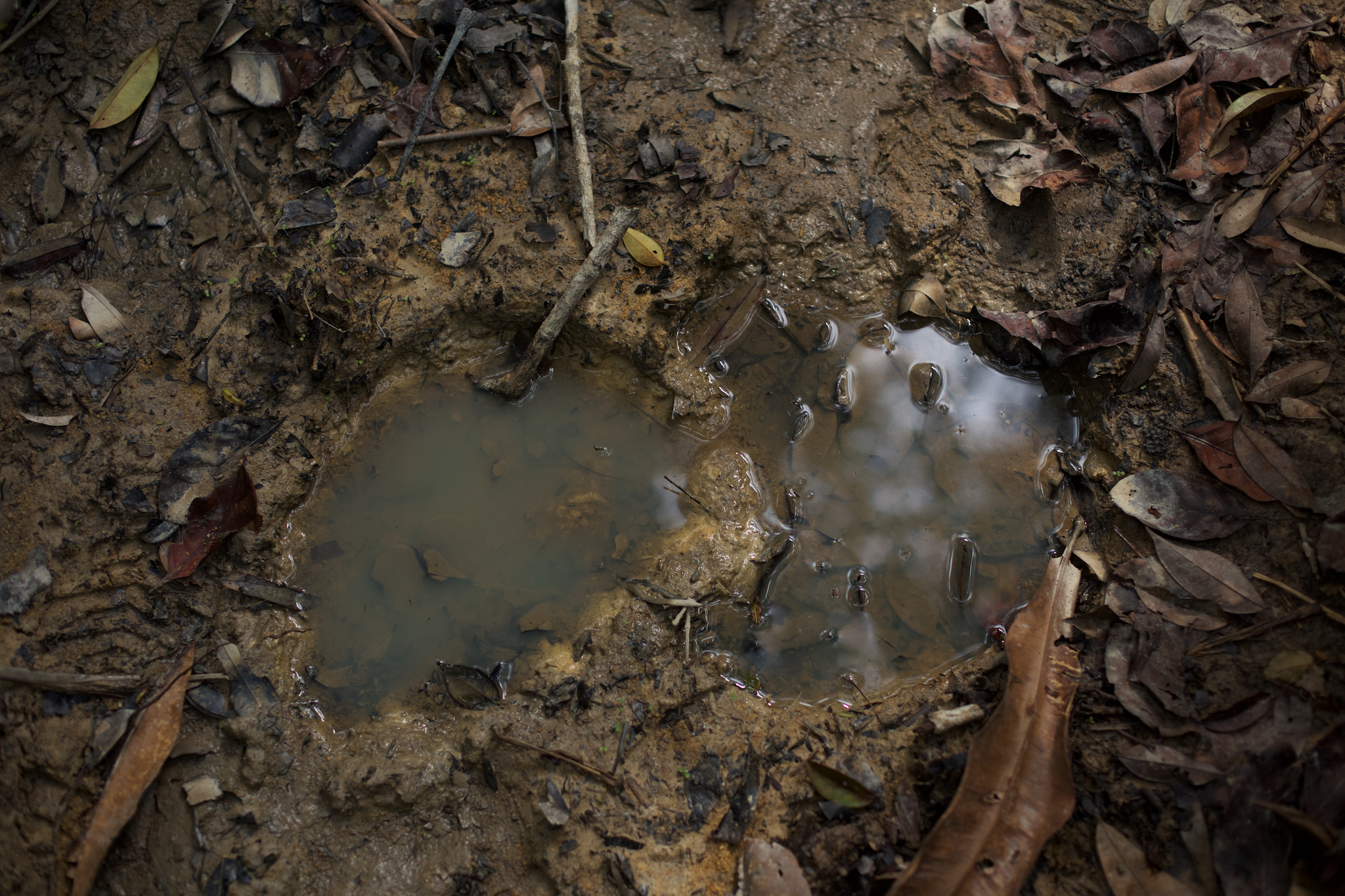The feeling that there might just be an elephant nearby – that is the feeling of walking through a forest in Lopé, Gabon. In this part of Gabon, there are only forest elephants (Loxodonta cyclotis). There are signs of these elephants everywhere, reminding you that the forest is someone else’s home, and not yours to explore at will. Some signs are easy to read, like these footprints in the mud, but others are written more quietly. They are all useful to understand, because sometimes they help you understand when an elephant actually is behind the next tree or hill!
The forest is full of species that are effectively managed by elephants. This is a large isolated moabi tree (Baillonella toxisperma [Sapotaceae]). Fruiting events are rare, but heavy – the vibrations of large oil-fruits falling on the forest floor is detected by elephants from long distances, and attracts them to feed. There are networks of elephant paths linking up such trees. In turn, the tree is itself dependent on elephants for dispersing its seeds across the landscape, and grows where it does because of the actions of elephants many hundreds of years ago.
Elephant dung is also common throughout the forest, especially on their paths. This dung becomes a nursery for regeneration in the forest – many seeds pass though elephant guts undamaged, and the dung itself is a nutrient-rich place for a plant to begin its life. Because elephant diets are not random, nor is successful gut passage, elephants become inadvertent propagators of some but not all tree species, slowly rewriting the forest in their own image.
In other cases, the signs of elephants are more direct. Many branches are snapped by passing animals, and others are covered in a gray mud left behind by the skin of individuals passing by.
But the best way to notice an elephant is to pause, be silent, and listen for it.
We can only work in the forest when it is not raining – the noise of raindrops on leaves is enough to drown out the sounds of elephants walking through vegetation. It is not so pleasant to catch one by surprise, or likewise to be caught by surprise.
Walking in the forest is a slow and careful process – moving quietly along elephant trails, then pausing to listen for motion, then repeating.
Sometimes nothing happens for days – and then the caution pays off. We almost ran into a young one heading up a hill one morning, and only the sharp ears of our forest guard Eli and researcher Mila prevented us from walking right into its path.
We still got a bit too close, though, and found ourselves unfortunately between the elephant we heard, and a different elephant we did not – its mother. This caused a very hasty retreat back down the slope to get out of danger.
Elephants – not people – are masters of these forests. In this case, this family group spent the rest of the morning standing in place, eating vegetation on the trail. Their breakfast wholly prevented us from continuing on our hike into the forest, and prevented us getting any useful work done. But for me, who had never been so close before, this delay was a rare pleasure, and a beautiful chance to move from seeing only elephant signs to feeling the presence of these magnificent animals.







Comments
One response to “In the footsteps of elephants”
It’s really a nice feeling catching sight of these elephants walking majestically in their natural habitat! Great piece!